 Image 1 of 6
Image 1 of 6

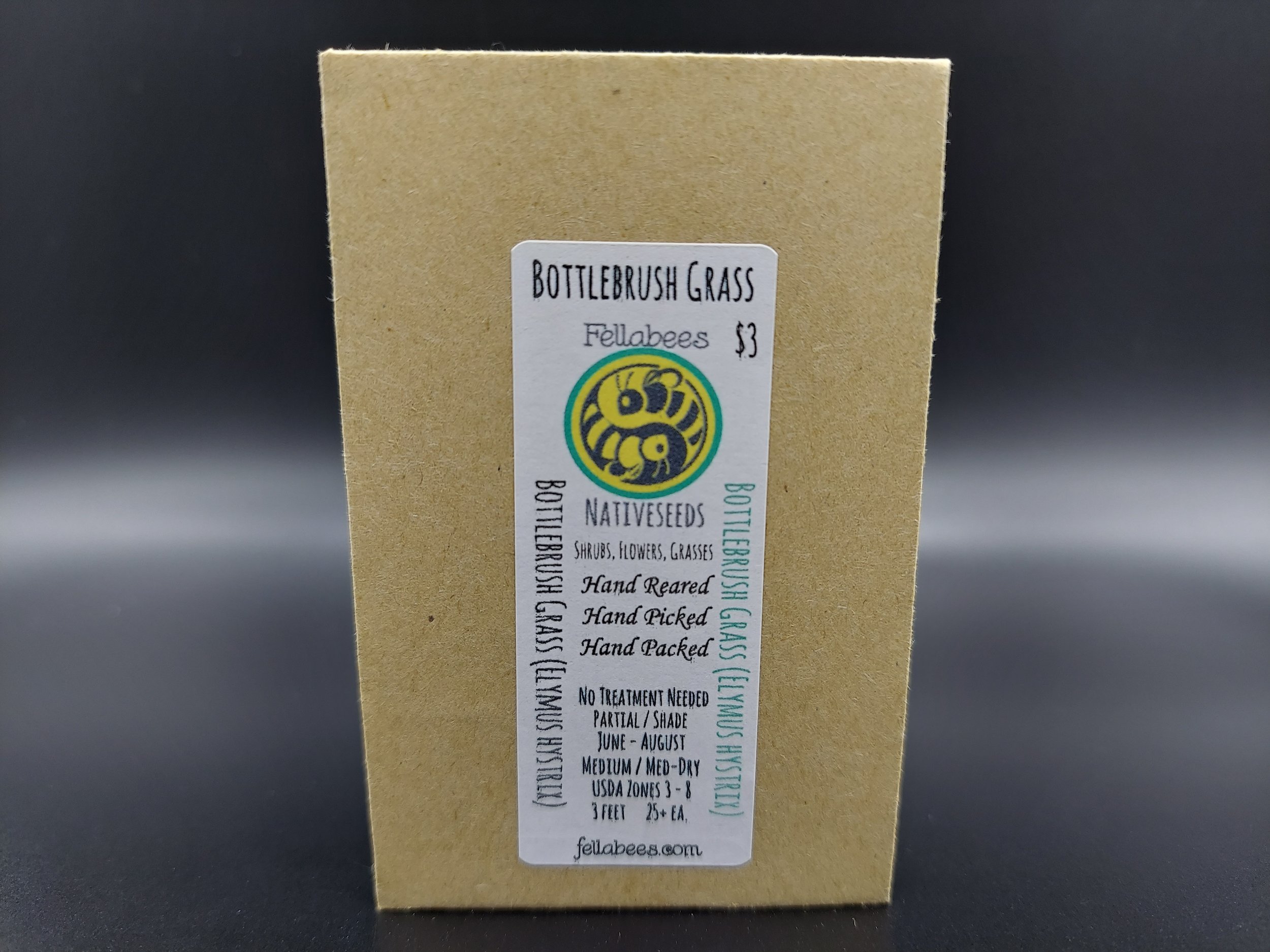 Image 2 of 6
Image 2 of 6

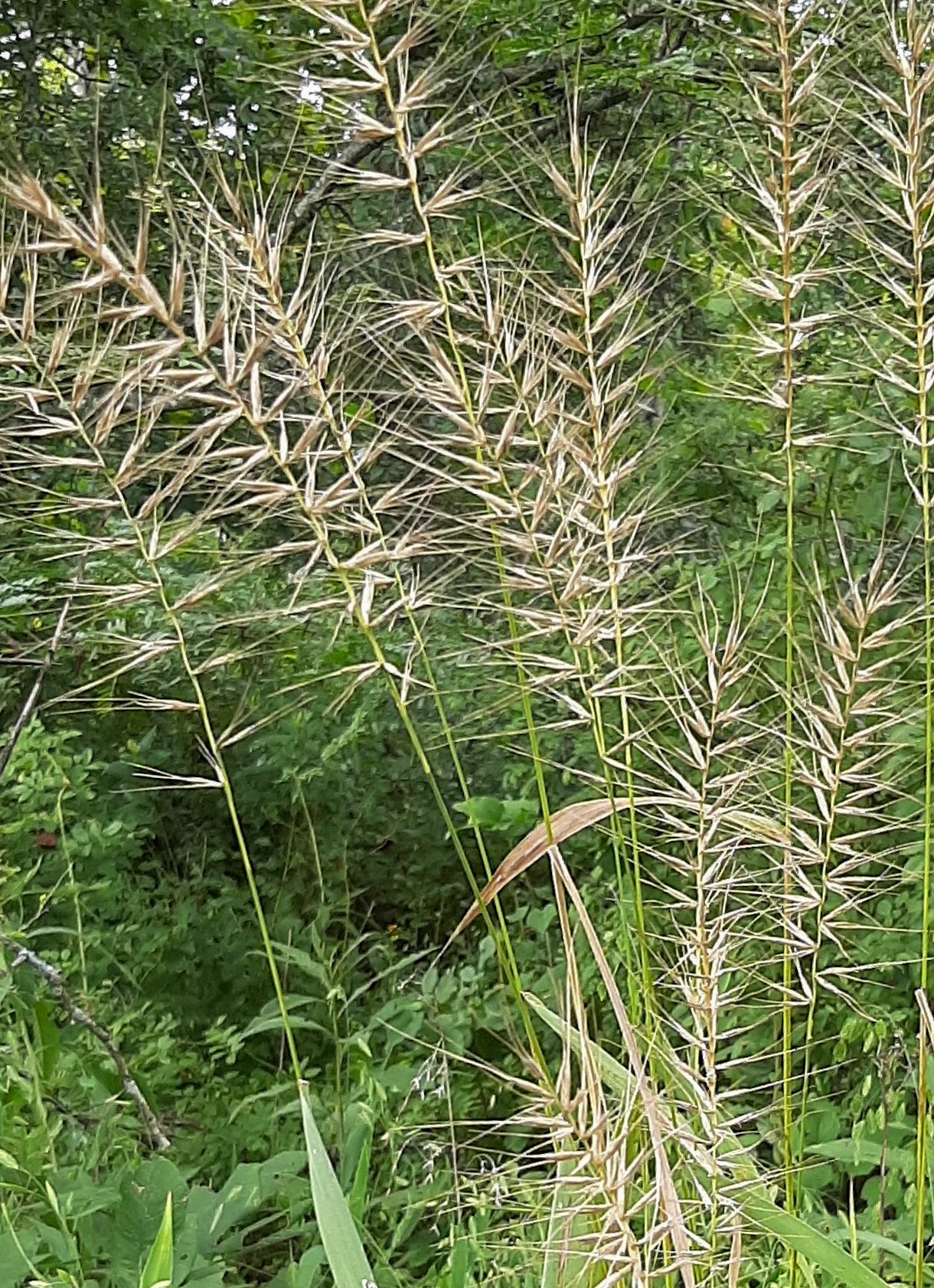 Image 3 of 6
Image 3 of 6

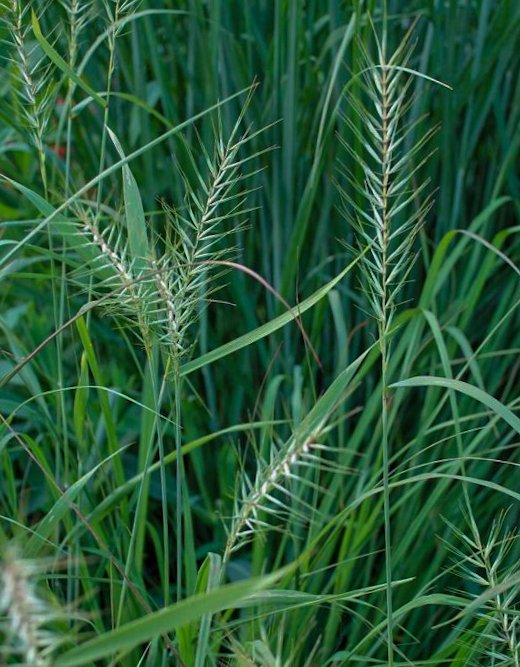 Image 4 of 6
Image 4 of 6

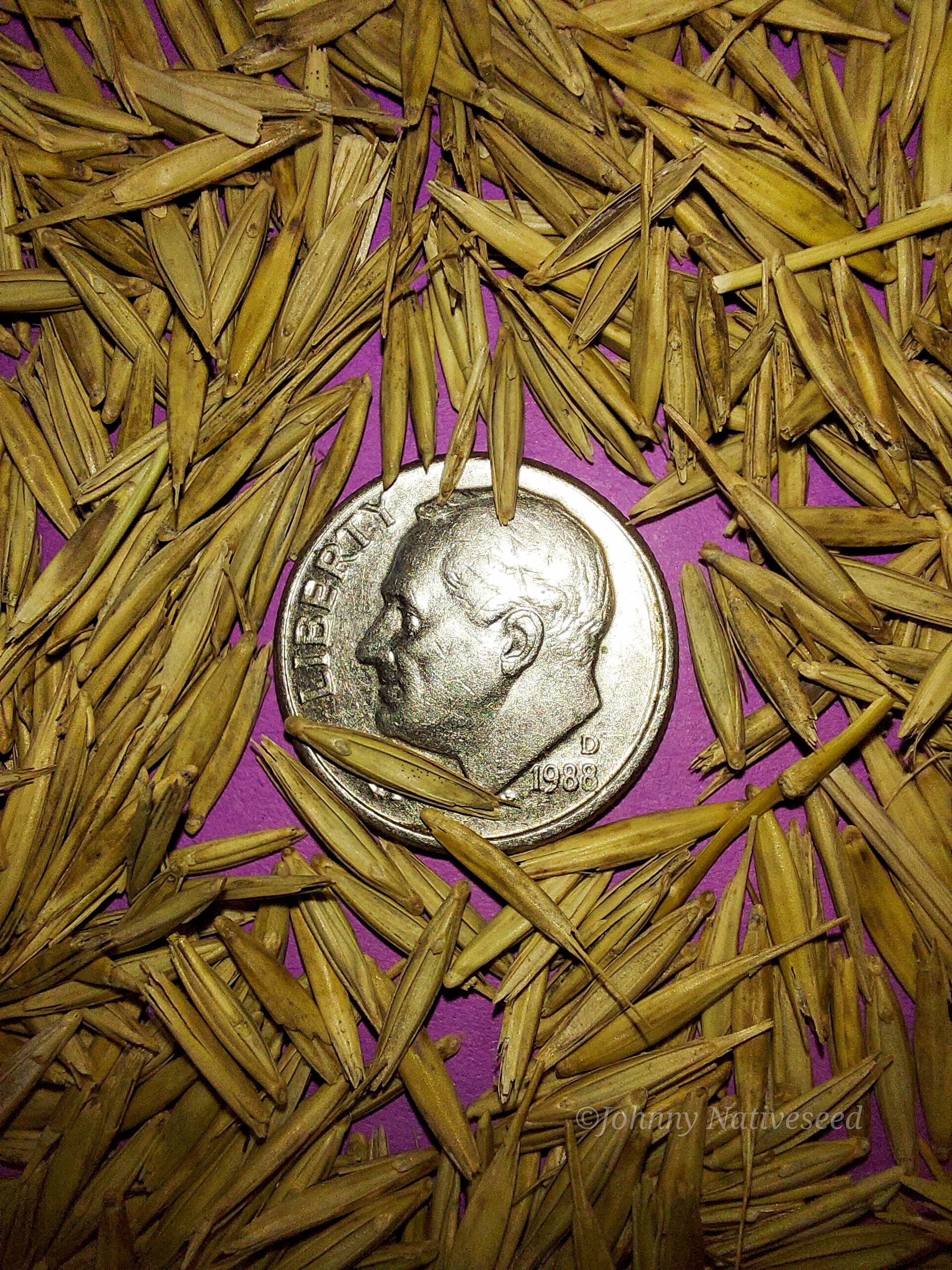 Image 5 of 6
Image 5 of 6

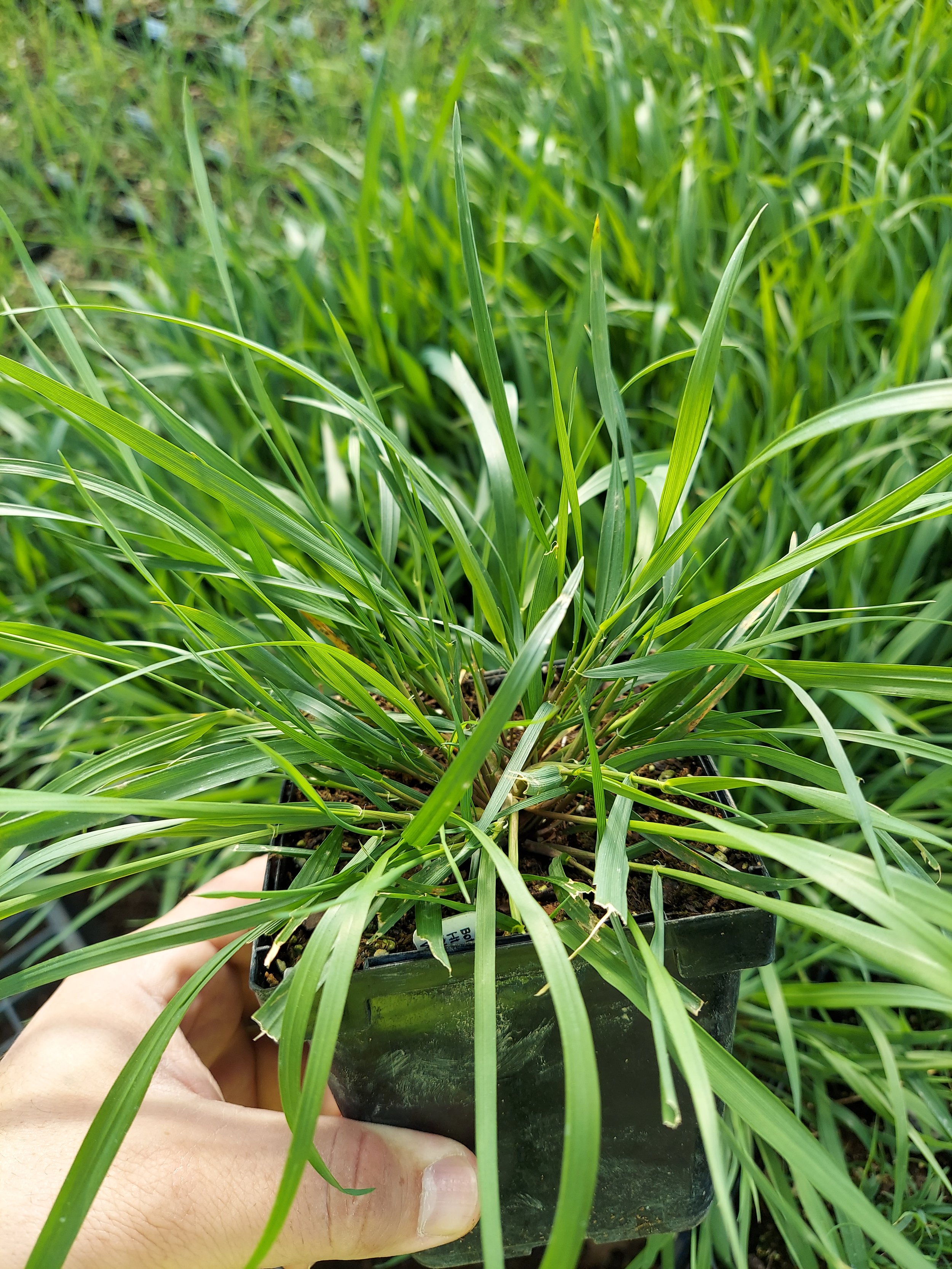 Image 6 of 6
Image 6 of 6







Bottlebrush Grass (Elymus hystrix)
Bottlebrush Grass (Elymus hystrix)
Elymus hystrix, more commonly known as Bottlebrush Grass, or Eastern bottle-brush-grass, is a bunchgrass of the Poaceae grass family. It is native to the Eastern United States and Eastern Canada.
Bottlebrush Grass is a herbaceous plant with alternate, simple leaves, on erect stems. The flowers are white and bloom in spring.
Bottlebrush Grass can range from 2½ - 4 feet in height. There are usually two spikelets at each of the five to nine nodes of the plant. Unlike some similar native grasses, the blades of Bottlebrush Grass do not have glumes surrounding its spikelets.
Elymus hystrix is self-compatible; that is, it can reproduce using its own pollen. Elymus hystrix has four copies of its genome, exhibiting a type of polyploidy (Polyploidy is a condition in which the cells of an organism have more than one pair of (homologous) chromosomes.) called tetraploidy (tetraploid is four sets of chromosomes).
Bottlebrush Grass is typically found in rocky, damp to wet, partially shaded habitat such as near rivers, creeks, or woods. Elymus hystrix does not grow well in heavily shaded areas and often inhabits the regions on the edge of shaded wooded areas such as dappled edges of forests.
While Growth of Elymus hystrix appears to be inhibited by excess shade, it is relatively resistant to soil compaction when compared to other herbaceous plant species, making it well suited to home landscape in its more shady areas.
It is a larval host to the Northern Pearly Eye Butterfly (Lethe anthedon)
This native grass is considered present but rare in many counties of the state of Maine, several eastern counties of the states of South Dakota, Nebraska, Kansas, and Oklahoma.
Plant Details
USDA Zones: 3-8
Germination Needs: No Special Treatment Needed
Life Cycle: Perennial
Sun Exposure: Partial to Shade
Soil Moisture: Medium-Wet, Medium, Medium-Dry
Plant Spacing: 1-1½ feet
Height: 3 feet
Bloom time: June, July, August
Advantages :
Pollinator Favorite: butterflies
Bird Favorite: seeds, insects, fruit, nectar, nesting, perchs.
Deer Resistant: Yes
Native to : Wisconsin, Minnesota, Michigan, Iowa, Illinois, Indiana, Ohio, Pennsylvania, New York, Vermont, New Hampshire, Maine, Massachusetts, Rhode Island, Connecticut, Delaware, Maryland, New Jersey, West Virginia, Virginia, Kentucky, Tennessee, North Carolina, South Carolina, Georgia, Alabama, Arkansas, Missouri, Oklahoma, New Mexico, Kansas, Nebraska, South Dakota, and North Dakota.
.
.
Packet quantities:
We pride ourselves on ethical, hands on, ecological management, using no mechanical or chemical methods whatsoever.
All of our native seed is hand reared, hand picked, and hand packed from native prairies under our exclusive management, never breaking chain of custody from the field until it is sent to you. Each packet is hand prepared for shipment by us, directly.
Small seed species will contain greater than 20-25 seed
Large seed species will contain greater than 10-15 seed
It is our mission to spread the wealth of native plant and pollinator ecological sustainability, and educate back yard gardeners as well as corporate and government entities in how to germinate, grow, and benefit from native synergies.
Thank you for your support, it is because of you, that we can grow together to do, what we do.🐛🦋🐝🐞🌾🌱🌼🧡
Bottlebrush Grass (Elymus hystrix)
Elymus hystrix, more commonly known as Bottlebrush Grass, or Eastern bottle-brush-grass, is a bunchgrass of the Poaceae grass family. It is native to the Eastern United States and Eastern Canada.
Bottlebrush Grass is a herbaceous plant with alternate, simple leaves, on erect stems. The flowers are white and bloom in spring.
Bottlebrush Grass can range from 2½ - 4 feet in height. There are usually two spikelets at each of the five to nine nodes of the plant. Unlike some similar native grasses, the blades of Bottlebrush Grass do not have glumes surrounding its spikelets.
Elymus hystrix is self-compatible; that is, it can reproduce using its own pollen. Elymus hystrix has four copies of its genome, exhibiting a type of polyploidy (Polyploidy is a condition in which the cells of an organism have more than one pair of (homologous) chromosomes.) called tetraploidy (tetraploid is four sets of chromosomes).
Bottlebrush Grass is typically found in rocky, damp to wet, partially shaded habitat such as near rivers, creeks, or woods. Elymus hystrix does not grow well in heavily shaded areas and often inhabits the regions on the edge of shaded wooded areas such as dappled edges of forests.
While Growth of Elymus hystrix appears to be inhibited by excess shade, it is relatively resistant to soil compaction when compared to other herbaceous plant species, making it well suited to home landscape in its more shady areas.
It is a larval host to the Northern Pearly Eye Butterfly (Lethe anthedon)
This native grass is considered present but rare in many counties of the state of Maine, several eastern counties of the states of South Dakota, Nebraska, Kansas, and Oklahoma.
Plant Details
USDA Zones: 3-8
Germination Needs: No Special Treatment Needed
Life Cycle: Perennial
Sun Exposure: Partial to Shade
Soil Moisture: Medium-Wet, Medium, Medium-Dry
Plant Spacing: 1-1½ feet
Height: 3 feet
Bloom time: June, July, August
Advantages :
Pollinator Favorite: butterflies
Bird Favorite: seeds, insects, fruit, nectar, nesting, perchs.
Deer Resistant: Yes
Native to : Wisconsin, Minnesota, Michigan, Iowa, Illinois, Indiana, Ohio, Pennsylvania, New York, Vermont, New Hampshire, Maine, Massachusetts, Rhode Island, Connecticut, Delaware, Maryland, New Jersey, West Virginia, Virginia, Kentucky, Tennessee, North Carolina, South Carolina, Georgia, Alabama, Arkansas, Missouri, Oklahoma, New Mexico, Kansas, Nebraska, South Dakota, and North Dakota.
.
.
Packet quantities:
We pride ourselves on ethical, hands on, ecological management, using no mechanical or chemical methods whatsoever.
All of our native seed is hand reared, hand picked, and hand packed from native prairies under our exclusive management, never breaking chain of custody from the field until it is sent to you. Each packet is hand prepared for shipment by us, directly.
Small seed species will contain greater than 20-25 seed
Large seed species will contain greater than 10-15 seed
It is our mission to spread the wealth of native plant and pollinator ecological sustainability, and educate back yard gardeners as well as corporate and government entities in how to germinate, grow, and benefit from native synergies.
Thank you for your support, it is because of you, that we can grow together to do, what we do.🐛🦋🐝🐞🌾🌱🌼🧡
Bottlebrush Grass (Elymus hystrix)
Elymus hystrix, more commonly known as Bottlebrush Grass, or Eastern bottle-brush-grass, is a bunchgrass of the Poaceae grass family. It is native to the Eastern United States and Eastern Canada.
Bottlebrush Grass is a herbaceous plant with alternate, simple leaves, on erect stems. The flowers are white and bloom in spring.
Bottlebrush Grass can range from 2½ - 4 feet in height. There are usually two spikelets at each of the five to nine nodes of the plant. Unlike some similar native grasses, the blades of Bottlebrush Grass do not have glumes surrounding its spikelets.
Elymus hystrix is self-compatible; that is, it can reproduce using its own pollen. Elymus hystrix has four copies of its genome, exhibiting a type of polyploidy (Polyploidy is a condition in which the cells of an organism have more than one pair of (homologous) chromosomes.) called tetraploidy (tetraploid is four sets of chromosomes).
Bottlebrush Grass is typically found in rocky, damp to wet, partially shaded habitat such as near rivers, creeks, or woods. Elymus hystrix does not grow well in heavily shaded areas and often inhabits the regions on the edge of shaded wooded areas such as dappled edges of forests.
While Growth of Elymus hystrix appears to be inhibited by excess shade, it is relatively resistant to soil compaction when compared to other herbaceous plant species, making it well suited to home landscape in its more shady areas.
It is a larval host to the Northern Pearly Eye Butterfly (Lethe anthedon)
This native grass is considered present but rare in many counties of the state of Maine, several eastern counties of the states of South Dakota, Nebraska, Kansas, and Oklahoma.
Plant Details
USDA Zones: 3-8
Germination Needs: No Special Treatment Needed
Life Cycle: Perennial
Sun Exposure: Partial to Shade
Soil Moisture: Medium-Wet, Medium, Medium-Dry
Plant Spacing: 1-1½ feet
Height: 3 feet
Bloom time: June, July, August
Advantages :
Pollinator Favorite: butterflies
Bird Favorite: seeds, insects, fruit, nectar, nesting, perchs.
Deer Resistant: Yes
Native to : Wisconsin, Minnesota, Michigan, Iowa, Illinois, Indiana, Ohio, Pennsylvania, New York, Vermont, New Hampshire, Maine, Massachusetts, Rhode Island, Connecticut, Delaware, Maryland, New Jersey, West Virginia, Virginia, Kentucky, Tennessee, North Carolina, South Carolina, Georgia, Alabama, Arkansas, Missouri, Oklahoma, New Mexico, Kansas, Nebraska, South Dakota, and North Dakota.
.
.
Packet quantities:
We pride ourselves on ethical, hands on, ecological management, using no mechanical or chemical methods whatsoever.
All of our native seed is hand reared, hand picked, and hand packed from native prairies under our exclusive management, never breaking chain of custody from the field until it is sent to you. Each packet is hand prepared for shipment by us, directly.
Small seed species will contain greater than 20-25 seed
Large seed species will contain greater than 10-15 seed
It is our mission to spread the wealth of native plant and pollinator ecological sustainability, and educate back yard gardeners as well as corporate and government entities in how to germinate, grow, and benefit from native synergies.
Thank you for your support, it is because of you, that we can grow together to do, what we do.🐛🦋🐝🐞🌾🌱🌼🧡
